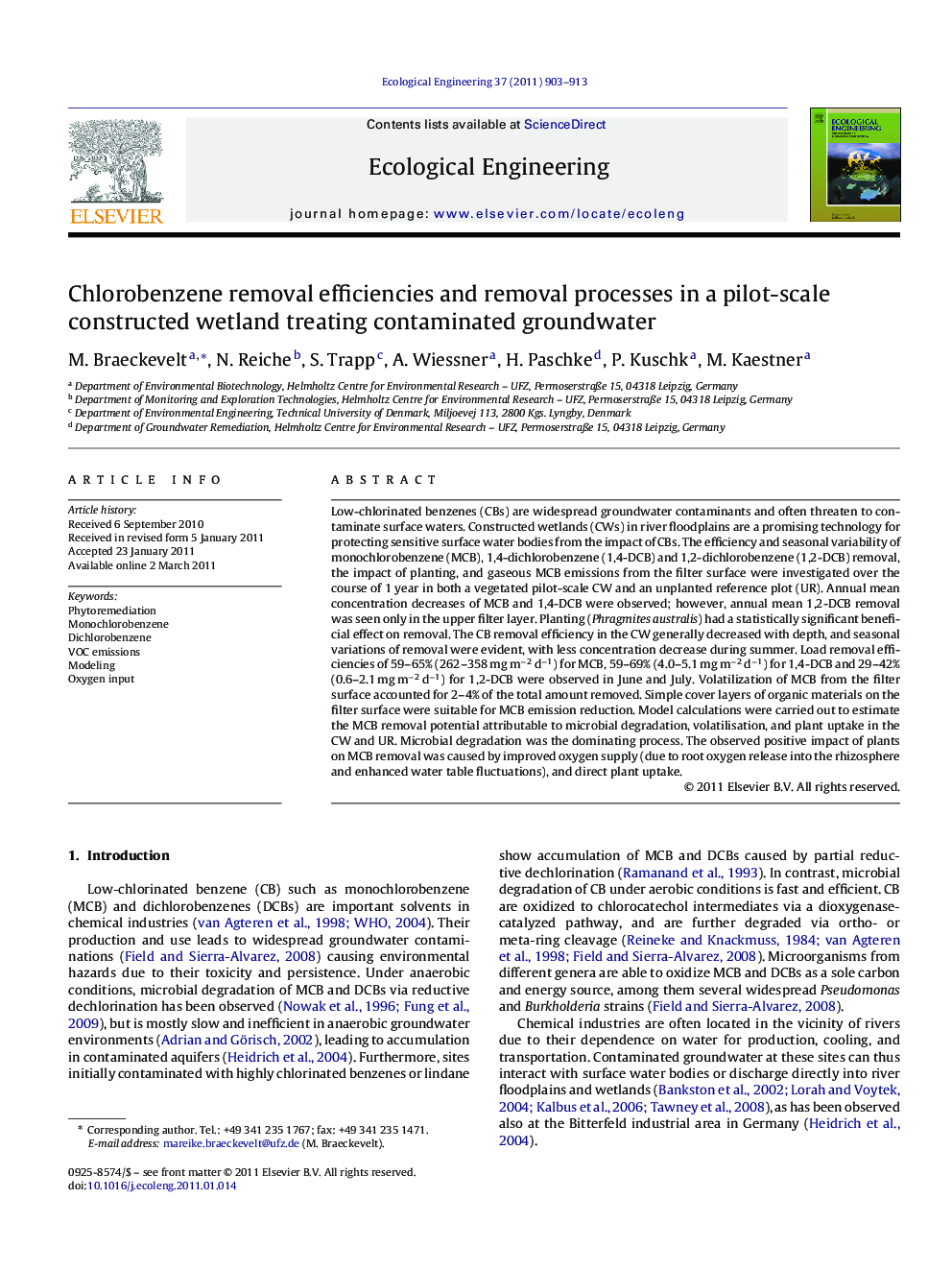| Article ID | Journal | Published Year | Pages | File Type |
|---|---|---|---|---|
| 4390321 | Ecological Engineering | 2011 | 11 Pages |
Low-chlorinated benzenes (CBs) are widespread groundwater contaminants and often threaten to contaminate surface waters. Constructed wetlands (CWs) in river floodplains are a promising technology for protecting sensitive surface water bodies from the impact of CBs. The efficiency and seasonal variability of monochlorobenzene (MCB), 1,4-dichlorobenzene (1,4-DCB) and 1,2-dichlorobenzene (1,2-DCB) removal, the impact of planting, and gaseous MCB emissions from the filter surface were investigated over the course of 1 year in both a vegetated pilot-scale CW and an unplanted reference plot (UR). Annual mean concentration decreases of MCB and 1,4-DCB were observed; however, annual mean 1,2-DCB removal was seen only in the upper filter layer. Planting (Phragmites australis) had a statistically significant beneficial effect on removal. The CB removal efficiency in the CW generally decreased with depth, and seasonal variations of removal were evident, with less concentration decrease during summer. Load removal efficiencies of 59–65% (262–358 mg m−2 d−1) for MCB, 59–69% (4.0–5.1 mg m−2 d−1) for 1,4-DCB and 29–42% (0.6–2.1 mg m−2 d−1) for 1,2-DCB were observed in June and July. Volatilization of MCB from the filter surface accounted for 2–4% of the total amount removed. Simple cover layers of organic materials on the filter surface were suitable for MCB emission reduction. Model calculations were carried out to estimate the MCB removal potential attributable to microbial degradation, volatilisation, and plant uptake in the CW and UR. Microbial degradation was the dominating process. The observed positive impact of plants on MCB removal was caused by improved oxygen supply (due to root oxygen release into the rhizosphere and enhanced water table fluctuations), and direct plant uptake.
